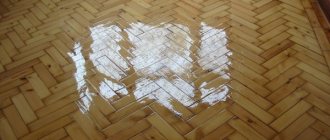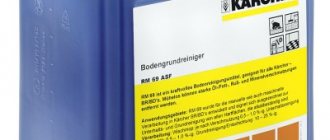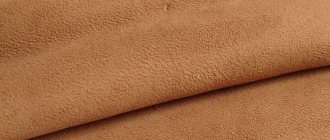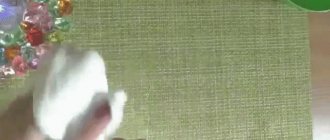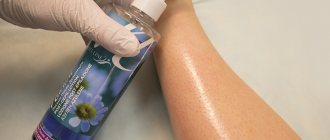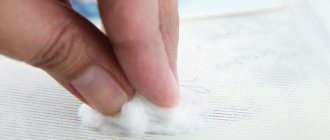How to care for eco leather
Eco-leather is an artificial material very similar to natural leather, widely used for making clothes, bags, and shoes. It is used to make car covers and furniture upholstery.
In appearance, artificial leather cannot be distinguished from natural leather, but there is a slight difference in the care of the products. In order for eco-leather products to have a beautiful appearance and serve us for a long time, we need to properly care for them. Regular and proper care is one of the elements of strength and durability. Each type of pollution has its own cleaning method and we must know them in order to avoid unnecessary problems.
Is it possible to wash eco-leather in a washing machine?
Initially, it is recommended to study the properties of the material indicated on the label. Manufacturers indicate whether they can be washed and at what temperature. If there is no such information, ask the seller or manager. Some manufacturers allow eco-leather covers to be machine washed. but we strongly do not recommend this. There is a very high risk that even with delicate treatment, the polyurethane layer will be damaged and the appearance will deteriorate.
First, try different means to remove dirt and stains; you may be able to avoid using a washing machine. You will always have time to do the laundry. Car covers will last longer and retain their appearance if the owner takes proper care of the material in a timely manner. The ideal option is regular wiping with a soft cloth, using gentle additional cleaning products that do not contain aggressive substances.
Main rules for caring for eco-leather products
Furniture
- Do not place it near heating appliances or in direct sunlight. When exposed to strong heat, the upholstery becomes deformed and fades in the sun;
- remove dust with a cloth or napkin slightly moistened with water;
- in case of heavy contamination, wipe with soapy water;
- Remove greasy stains with a solution of ethyl alcohol and shaving paste;
- remove ink stains with acetone, then wipe with a damp cloth;
- if the skin is white, then wipe it with warm milk;
- We remove stains from grease and oils on white skin using hydrogen peroxide.
Important ! When caring for eco-leather, you need to use weak solutions (20%) and wipe the product dry after processing.
Shoes
- Wipe regularly with a damp cloth; if heavily soiled, use a special shampoo;
- do not allow moisture to get inside the shoes;
- use moisture-resistant protective creams;
- In case of severe scuffs, touch up with shoe paint.
Reference ! All natural leather care products can be used for eco-leather.
Cloth
- can be washed in warm water using liquid laundry detergent;
- do not expose to strong mechanical stress;
- After washing, let the water drain; do not wring out;
- dry on hangers of suitable size to avoid deformation of the products;
- some things can be washed in automatic machines by choosing a gentle mode without spinning;
- For minor stains, wipe with a cloth slightly moistened with water, a solution of detergent, or an alcohol solution.
Note ! To avoid damaging your clothes when washing, follow the instructions on the manufacturer's label.
Car covers
- Can be cleaned in the same way as any eco-leather product. Wipe with a damp cloth, alcohol solution, acetone, hydrogen peroxide; after treatment, wipe with a dry cloth.
- There are many car seat care products on sale in the form of foams and creams, use them. Apply the cream to the surface, let it absorb a little and then wipe with a cloth.
- After cleaning, treat the surface with water and a dirt-repellent agent.
- Very dirty covers should be dry cleaned.
To care for and clean leather products, you can use cleaning wet wipes for monitors. They contain alcohol, they clean well, dry quickly and do not harm artificial leather.
Caring for eco-leather clothing...
It is very important to properly care for eco-leather items at home. This will help prolong their life and make the use of clothing or accessories as trouble-free as possible. The fabric is easy to clean from stains and dirt. Therefore, before you buy a product made from eco-leather, make sure that you are dealing with it. Ask the seller to present a quality certificate. Not out of harm, but in order to understand how to properly organize the care of clothes after purchase.
We erase
When planning to wash, carefully study the product tag. The label indicates how to properly wash eco-leather in a particular case. Some products can only be washed by hand. Others can be put into the washing machine, setting the minimum spin speed and the temperature to no more than 30°C. But don't guess. The shortcut is your main clue and your guide.
It happens that a product does not have a label. In this case, you need to conduct reconnaissance in force. To do this, apply a little water to an inconspicuous place of the item. The result of the experiment will appear in 30 minutes. If the product wrinkles in the place where you wet it, then you will have to abandon wet cleaning. If the fabric does not change its visual characteristics, then it is not afraid of moisture. The table will tell you what the correct algorithm of action will be in the case of manual and machine processing.
Table - Washing eco-leather by hand and in a machine
| Washing type | Actions |
| Manual | — We hang clothes above the bathroom; — place a basin with warm water under the product; - add powder or gel to the water; — moisten a foam sponge in the liquid; - wipe the surface of the clothes with it; — having completed hand washing, change the water to clean water; - wipe the product again with a sponge soaked in clean water |
| Machine | — Turn the item of clothing inside out; — fasten the zippers if they are provided for by the design of the product; - fasten the buttons; — put the item in the drum, select the delicate mode; — pour gel without bleach into the powder compartment; - upon completion of the cycle, gently wring out the item by hand and dry it |
Drying
Eco-leather, despite its friendly attitude to ultraviolet radiation, should not be dried in the sun. And hanging it on a heater or radiator is generally strictly prohibited. Listed below are three basic drying rules that will protect you from unexpected deformation of your item.
- Wring with a towel. If you have washed a jacket, raincoat or something bulky, you need to get rid of the excess moisture in the item as delicately as possible. To do this, the clothes need to be rolled up and wrapped in a large terry towel. The fabric of the towel will absorb water, and the product can be safely sent for further drying.
- “No” to hair dryers and other electrical appliances. Aggressive exposure to warm air can cause a garment to wrinkle or shrink.
- “Yes” to a draft. The best location for drying is a well-ventilated area. In a draft, the item will dry quickly - as naturally as possible.
Removing stains
In most cases, a regular sponge and a ladle of clean water helps remove stains from eco-leather. Wet the sponge, wipe the stain - and voila! - the pollution is gone. If you encounter an old stain, first moisten it for 20 minutes, and then treat it with a sponge. And if you intend to freshen your car covers, use a soap solution. The table will give all other tips regarding stain removal.
Prohibited eco-leather care products
- Do not use gasoline or solvents; they damage and corrode products;
- It is prohibited to use brushes, scrapers, knives and various sharp objects that can tear or cut the skin;
- It is contraindicated to dry products on radiators or with a hairdryer;
- It is not recommended to heat or iron with a hot iron.
Important! It is strictly forbidden to use chlorine-containing products for cleaning. For all products there is one rule for care - you cannot rub, press, stretch too much, you need to clean gently and carefully.
Source
Eco leather care
Modern eco-leather can look very similar to natural leather.
Eco-leather during production and during operation is more environmentally friendly than natural and PVC leather (vinyl), which is why it is called eco-leather. It is made by coating fabric (cotton) with an elastic polymer called polyurethane (PU). Eco-leather remains soft and elastic for the entire period of its operation. Eco-leather or PU leather (polyurethane) consists of a cotton backing and a thin layer of polyurethane.
Car care for eco-leather
- Eco-leather in the car interior requires periodic cleaning and application of a protective composition. It is better to gently clean the seats regularly than to wash off heavy dirt later.
- To clean the eco-leather interior, it is better to place the car in the shade so that the seats are not hot. On hot seats, the cleaning composition will evaporate before it has time to work.
- The first step is to vacuum the seats to get rid of large debris. It is better to vacuum with a soft brush attachment, which will help sweep away stuck debris.
- Then you can move on to washing.
- Eco-leather is waterproof, has microscopic pores that allow only air and steam to pass through, so all dirt, in most cases, remains on the surface and is not absorbed.
- It is easy to clean with microfiber and warm water. Usually, you can easily remove liquid and food stains without resorting to detergents.
- Never rub eco-leather with an abrasive cloth or a sponge with an abrasive backing. Otherwise, it will be damaged and wear out quickly.
- If the interior is heavily soiled, detergent may be required.
- Do not use detergents based on ammonia, as they can damage eco-leather.
- You can use a purchased leather cleaner. Test any cleaning agent first on the trim in a hidden area to ensure no adverse effects occur. Apply, wipe, let dry and see the result. If the product is safe, then it can be safely used on all leather upholstery.
- You can make your own cleaner. Make a non-concentrated soapy water solution and pour it into a spray bottle. Spray the surface, wait a little and wipe with microfiber.
- You can also use another method. Spray the cleanser onto the microfiber and cleanse the skin in a circular motion. If the skin is very dirty, then instead of microfiber, use a brush with soft natural bristles.
Clothing with dye may leave marks on light eco-leather upholstery.
- It is better to remove the resulting stains immediately after they appear. This way they will be removed without effort. If the stain cannot be removed immediately, use soapy water on a soft cloth and soak the stain without wiping. Then, after waiting a little, try to remove the wet stain by soaking it with dry microfiber.
- Do not remove stains with solvent. This will only smear the stain and become more ingrained.
- Clothes with strong dyes (such as jeans) can transfer color to light-colored faux leather trim. It is best to wipe such stains with a damp soft cloth or microfiber towel as soon as they occur.
Washing perforated eco-leather
- You can also use damp microfiber to wash perforated leather.
Using a circular motion, the brush will thoroughly clean the perforated skin.
- For more severe contamination, use a store-bought or homemade cleaning composition with a soft-bristled brush.
- Spray the product onto the brush, not directly onto the seat.
- Gently work the skin in a circular motion. Walk this way over the entire surface.
- While the product is still wet, dry it with a microfiber towel. This wet residue will contain all the dirt that was lifted from the surface by the brush and product. The process can be repeated until the desired result is obtained.
- When wiping, use the clean side of a microfiber towel.
- Microfiber should be rinsed and wrung out periodically.
- If moisture or debris gets into the holes of the perforated leather, you can vacuum the holes with a narrow nozzle.
Protective layer for eco leather
For protection, you need to use products designed for eco-leather and vinyl. You need to ask a specialized store and find out what product you need for artificial leather. There are protective compounds that will not shine after application and will look natural. In the case of eco-leather, the protective agent will not penetrate into the leather layer, but will remain on the surface. At the same time, eco-leather with a protective layer will be easier to wash.
How to care for things made from eco-leather?
Products made from eco-leather are extremely popular; this material is practical and inexpensive, and the variety of types and colors allows it to be used not only for sewing clothes, but also for making car seat covers, as well as for upholstering furniture. Caring for eco-leather products is not particularly difficult and consists of their proper use, cleaning and storage. In order for this material to retain its original appearance for as long as possible, a number of rules will need to be followed.
How to get rid of stains on eco-leather?
It all depends on the “age” of the pollution. Old stains will take longer to clean and use a wider arsenal of available tools:
- Prepare a weak solution based on ethyl or ammonia and treat the contaminated area.
- Abundantly soak a piece of cotton gauze in hydrogen peroxide and blot the stain on the upholstery; after 10-15 seconds, wipe first with a wet and then with a dry piece of soft cloth.
- Squeeze a small amount of shaving foam onto your palm and spread evenly on the surface affected by dirt for half a minute, then remove the residue with a wet and dry cloth.
- Candle wax can be removed with an iron - you need to put a blotter on the stain and iron it several times.
Any eco-leather product will last longer with timely cleaning, regular care and proper use. Systematic wet treatment, strict adherence to the recommendations of furniture professionals and the use of specialized products for the care of leatherette will extend the life of furniture and wardrobe items. The main thing to remember is that dirt is easier to prevent than to clean.
Eco-leather is not leatherette or a natural product. Most buyers are biased towards this material, believing that something made from eco-leather will not last long. Meanwhile, fabric created on the basis of synthetic fiber is by far the best analogue of natural leather. It boasts a long service life and trouble-free service. And also because the manufacturing process does not harm the environment.
Scientists have long tried to create a material that could imitate natural leather not only in appearance, but also in quality. And they succeeded only in the early 60s of the last century. American researchers were the first to make the discovery. And right after them, less than a year later, the Japanese discovered eco-leather.
General principles of care
In order for an eco-leather product to look like new for a long time, you will need to provide the material with proper care.
It is worth remembering 7 basic rules.
- Clean the surface regularly using a soft cloth.
- Remove stains only with a foam sponge or a piece of flannel, avoiding the use of brushes.
- Select gentle cleaning products that do not contain abrasive particles or aggressive components.
- When removing dirt, wipe the material with light movements, without applying much mechanical force.
- Use special products to protect the material from moisture, prevent cracks and give it softness and shine.
- Protect eco-leather products from exposure to direct sunlight.
- Dry the material naturally, away from heating devices and radiators.
If an eco-leather item becomes heavily soiled and difficult to remove stains appear on it, you should not experiment at home. It is better to go to a dry cleaner, where specialists know exactly how to clean such material.
Features of the material
First you need to figure out what this simple high-tech product is. The structure of eco-leather is represented by two layers - a polyester fabric base and microporous polyurethane coating. The first is responsible for the wear resistance of the products, and the second is responsible for the external features, that is, the similarity with the structural characteristics of natural leather coverings.
To extend the life of eco-leather, it is important to adhere to a number of care recommendations:
- Dry stains from items made of this material are removed using a soft microfiber cloth or flannel.
- When removing dirt, use a minimum of effort, because strong friction will only aggravate the situation.
- Store furniture and wardrobe items away from heating radiators and direct sunlight.
- Twice a year, impregnate eco-leather items with special hydrophobic preparations.
- If you have a pet in the house, you need to trim the nails in a timely manner, as they are one of the main enemies of leatherette.
Return to contents
Is eco-leather washable?
Since there are many types of eco-leather, before putting the product in the washing machine, you should carefully study the label. Here you can find information about what type of washing and temperature conditions are recommended for a specific type of fabric.
For example, thin eco-leather intended for sewing clothes is most often cleaned only by hand, while denser materials used in the manufacture of car covers are perfectly resistant to machine washing.
Eco-leather should be washed by hand, following a certain procedure.
- Pour warm water into a basin, the temperature of which does not exceed 30 degrees.
- Add detergent and wait until it is completely dissolved. For eco-leather, it is better to choose gels, since the components of dry formulations are less rinsable.
- Place the product in a soapy solution and wash immediately. Soaking items made of artificial leather is strictly prohibited.
- After removing stains and dirt, rinse the product thoroughly in warm water.
If the manufacturer allows machine washing, the products must be cleaned automatically in compliance with the following rules.
- Use only liquid detergents for washing eco-leather.
- Use fabric softener to soften the material.
- Wash the product on a delicate cycle.
- Set the water temperature not exceeding 30 degrees.
- Disable the spin function.
Under no circumstances should a washed item be twisted or wrung out, as this will lead to deformation of the fabric and the appearance of abrasions.
Specifics of care
When choosing a product for cleaning eco-leather, you must first focus on the composition of the top layer of leatherette. The manufacturer indicates this information on the tag or in the passport of the product itself, as well as recommendations on how to care for the item in order to extend its service life. An important factor is the components of the cleaning agent itself. This list should not contain chlorine-containing or acidic particles.
Excess creamy cleaning products are removed with cotton gauze wipes or other soft cloth.
There are a number of restrictions in the process of combating pollution:
- Do not use any brushes, as the bristles can easily damage the coating texture.
- Oil stains can only be washed off with soap solutions; gasoline and turpentine oil will only ruin the upholstery.
- It is forbidden to dry washed-out marks after dirt - this can lead to deformation of the coating.
- Do not use dry powdery substances for cleaning products.
Return to contents
How to wash clothes and clean leatherette shoes?
Cleaning stains on shoes is easy; all you need is a damp cloth and a piece of soft cloth. If we talk about radical processing of wardrobe items, then you can rinse the affected items yourself by hand, but it is important not to rub or twist the clothes after finishing the work. Experienced housewives manage to wash eco-leather in a washing machine using the “hand wash” program. In any case, the maximum water temperature is 30 °C.
After wet processing, the item is hung on a trempel over a bathtub or other container and the bulk of the water is allowed to drain. The resulting wrinkles after washing in a machine or by hand must be smoothed out and the product dried under normal conditions. The most troublesome part is drying the fabric base and lining. Excess moisture evaporates faster if clothes are hung in a well-ventilated place with the inside out.
Rules for cleaning furniture
As soon as new contamination is discovered, you should immediately begin to remove it. This is very easy to do at home, because every housewife has a piece of laundry or baby soap. To wash a mud mark, you need to prepare a weak soap solution and apply it to the problem area. Using gentle movements, distribute the cleaning component from the center to the edges of the stain, then blot the remaining soap with a washcloth.
It is better to treat white furniture upholstery with special store-bought products, because it is very difficult to clean the sofa from dirt on your own.
Rules for drying eco-leather products
In the process of cleaning eco-leather, it is important not only to follow the basic washing rules, but also to carefully dry the item.
- After washing, place the item in a basin and allow the water to drain.
- Lay the item out on a large towel, carefully straightening out the folds.
- Cover the product with a second towel, pressing slightly on the terry cloth with your hands. This will help remove excess moisture.
After the towel has absorbed excess water, the dress, jacket or jacket will need to be hung on hangers until completely dry. And skirts, trousers, car or furniture covers are dried in a horizontal position.
Sometimes minor abrasions appear on eco-leather products after washing. It is easy to eliminate this defect by using special paint designed for this type of material.
How to clean eco-leather?
Eco-leather, like many synthetic materials, does not like moisture too much. For this reason, items made from this fabric should be washed only in extreme cases, and if there is minor dirt, simply clean it.
To do this, it is recommended to use special products that are easy to find in household chemical stores and act in accordance with the attached instructions. But if it was not possible to purchase the composition, it is permissible to use available materials.
You can remove street dust, dirt and stains from the surface using simple means:
- toilet and laundry soap;
- ammonia;
- shaving foam;
- lemon;
- hydrogen peroxide (only for light-colored eco-leather).
Any of the selected products will cope with minor stains no worse than a special composition. To do this, just dissolve it in water and apply it to the surface, then wipe the material with a damp sponge. If we are talking about local cleaning, when it is necessary to remove a stain, it is permissible to use the listed products in their pure form.
How to care for shoes made from synthetic materials
The main advantage of shoes made from artificial materials is that they are easy to care for, and expensive products are not needed to maintain their appearance.
Caring for leatherette shoes
You need to constantly take care of your shoes. If it is not cleaned of dust and dirt, this will cause the leather to become degreased, and it will become hard and easily wet.
The rules for caring for shoes made of any materials are the same:
- Immediately after purchase, shoes should be treated with a water-repellent spray or a special cream, which should be selected according to the color of the shoes;
- If the shoes get wet, they must be dried by stuffing them with paper;
- If white stains appear on your shoes, you can remove them with a vinegar solution;
- Clean your shoes 2-3 times a week with shoe polish. After the cream is absorbed, you need to rub it with velvet cloth to add shine;
- Dry skin can be lubricated with castor oil.
To care for leatherette shoes, it is better to use sponges soaked in silicone. Heavy stains can be easily removed with a soap solution. Glycerin will provide moisture protection.
Caring for faux suede shoes
Suede is a soft, velvety leather produced by fat and formaldehyde-fat tanning of the skins of small animals. Usually lacks a facial layer.
Source Wikipedia
Faux suede is similar to natural suede, but this material is easier to clean. It is more stain resistant, but the cleaning rules are the same as for natural suede.
Shoes should be cleaned every day if shoes are worn daily. To clean suede shoes, special brushes are sold that can be used to remove dust and small lint.
For heavily soiled areas, you can use a solution made from soap or dishwashing detergent. Lightly moisten a lint-free cloth in this solution and wipe the stains. Then blot with a dry cloth. Repeat several times until the stain is cleared.
Then we dry the shoes and raise the pile with a brush.
Caring for artificial velor shoes
Such shoes require careful care; contact with water should be avoided.
Like shoes made from other materials, they must be treated with a water-repellent spray immediately after purchase. Dirt can only be removed after it has completely dried using a stiff brush.
When washing the heel and sole, avoid getting water on the material. To remove stains, you can use a special stain remover or a regular school eraser. To remove a greasy stain, simply wipe it with a weak solution of vinegar or ammonia.
Glazed areas can be removed with steam or an eraser. A special aerosol will help make the color more saturated.
Caring for faux nubuck shoes
Artificial nubuck looks similar to natural nubuck, but is more wear-resistant. Nubuck has low moisture resistance, so such shoes must be protected from moisture and dirt. That is why this is not the best option for early spring and slushy autumn. But nubuck is not afraid of frost.
Care, again, should begin from the moment of purchase, while the material has not yet lost its properties. Even before going outside, you need to soak your shoes with a water-repellent agent to increase their wear resistance. Impregnation should be carried out in 3 approaches, each time allowing it to absorb and dry.
To care for such shoes you will need special impregnation, aerosols, and a brush that will not only remove dirt, but also preserve the fleecy surface of the shoe. It is best to buy an additional brush for cleaning heels and soles.
First, shoes need to be cleaned of dust and dirt. Then apply a spray evenly to the surface, which will protect the shoes from getting wet. If the shoes are very dirty, you need to wipe them with a sponge soaked in a solution of water and a few drops of ammonia. After this, dry well.
Care for light-colored eco-leather
Light-colored materials require a special approach. First of all, they will have to be cleaned much more often, since stains and dirt on them will be more noticeable.
To clean a jacket or furniture cover made of light or white eco-leather, you will need to treat the material with a cotton swab or foam sponge soaked in warm milk, and then wipe dry.
If stains appear on white or very light material, you can use one of two methods.
- Apply shaving foam to the dirt and rub in a circular motion, and after 30 seconds remove with a damp cloth and wipe the surface dry.
- Dampen the stain with hydrogen peroxide and leave for 10 seconds, then remove the solution and polish the material with a piece of flannel or woolen cloth.
Eco-leather should be cleaned regularly and stains should be removed immediately after they appear. This will prevent dirt from “eating” into the fabric and will eliminate the need to use chemical cleaning agents.
How to smooth eco-leather covers
There are many effective ways to smooth out wrinkles on covers. The safest option is treatment with warm water. To do this, you need to moisten the material with a damp sponge or spray bottle. Then use a soft towel or rag to go over the fold several times. Moistened fabric smoothes out well. When the wrinkles disappear, it is important to wipe the cover dry. Never use irons or hair dryers to dry eco-leather - this is a very dangerous initiative. When exposed to high temperatures, the surface may become deformed.
What products should not be used when caring for eco-leather?
Eco-leather requires delicate handling, and in order not to cause irreparable harm to the material, you should take into account a number of prohibitions.
When cleaning eco-leather products, the following is unacceptable:
- use brushes, even with soft bristles;
- use powders containing abrasive particles and bleaching components;
- clean eco-leather with compounds containing chlorine and acids;
- remove stains from the surface of the material using bleaches and solvents;
- treat the material with products intended for other types of fabrics.
In addition, when drying eco-leather products in the fresh air, they should be placed under a canopy; in the sun, the material can become deformed and burn out.
Rules for storing eco-leather products
When storing eco-leather items for seasonal storage, you need to make sure that they retain their original shape and that folds and creases do not form on the surface. This can be achieved by following simple recommendations.
- Place products in cool areas, away from light and heat sources.
- Hang your clothes on hangers, choosing them exactly according to the size of the item.
- Use fabric covers, since polyethylene does not allow air to pass through well and does not allow the material to “breathe.”
- Dresses with straps and bags should be stored in bags, since the product may become deformed if left in a “hanging” position for a long time.
- Before putting the item away for storage, you should carefully straighten out all the folds and creases.
If clothes removed from the closet are wrinkled, you can put them in order by slightly moistening the surface and drying it naturally. Ironing eco-leather is strictly prohibited.
The listed recommendations will allow you to preserve things made from artificial materials in their original form for a long time and significantly extend their service life.
Source
What is eco leather
Eco-leather material is created on the basis of polyurethane. Synthetic fiber has made it possible to minimize the number of killings of our little brothers, as well as please environmentalists with an improved manufacturing algorithm. The process of creating polyurethane leather is much more environmentally friendly than the curing and finishing of natural material. But even these are not the only advantages of this fabric.
About the production process
The production of an artificial analogue of natural material is carried out by chemical industry enterprises. For this purpose, there are specialized closed-type installations. The production process is as follows.
- Natural base. It can be fabric or polyester fiber.
- Film layer. A special polyurethane film is applied on top of this base, which allows air to pass through due to the presence of microholes in its structure.
- Coating thickness. The manufacturer selects the thickness of the applied coating based on the further use of the product: the thicker the film, the harder the final material and the stronger it is.
About the benefits
The many advantages that artificial material has make things made from it top sellers.
- Identity of the drawing. To obtain a “natural print”, embossing is carried out, after which it is impossible to distinguish regular leather from eco-leather by the front side.
- Humanity and economic profitability of production. There is no need to kill animals to create a jacket, trousers or furniture from eco-leather, there is no need to pollute the environment, and the cost of the finished material is several times lower than that of natural leather.
- Possibility of release in large solid pieces. For obvious reasons, it is impossible to produce a whole roll of genuine leather. But eco-materials are possible. This means that dressmakers can easily create seamless clothing and accessories from artificial analogues, increasing the aesthetics of the product and its performance characteristics.
- Friendship with ultraviolet. Natural leather tends to fade in the sun, and frost makes the material harder. The eco-analogue is not afraid of either sunlight or low temperatures, which means it does not change upon contact with them.
- Compliance. Eco-leather is easy and simple to work with. It can be easily cut, does not create difficulties when sewing and is characterized by increased elasticity.
- Long service life. Products made from genuine leather analogues last so long that they become boring to their owners. Eco-leather is not leatherette, which is destroyed literally before our eyes. This is a material that, in terms of its characteristics, is in no way inferior to ordinary leather, but is cheaper and safer.
- Hypoallergenic. An important difference between eco-leather and leather is the absolute hypoallergenic nature of the first fabric and the prohibition on wearing the latter for those who suffer from allergic reactions.

